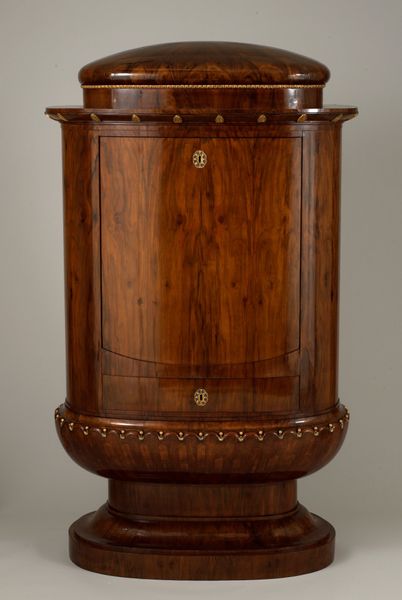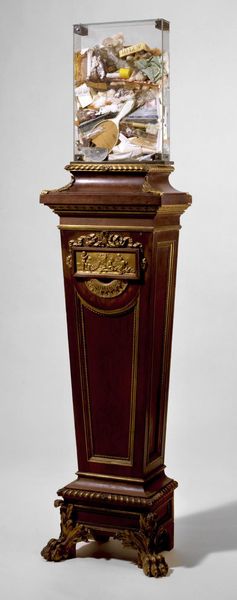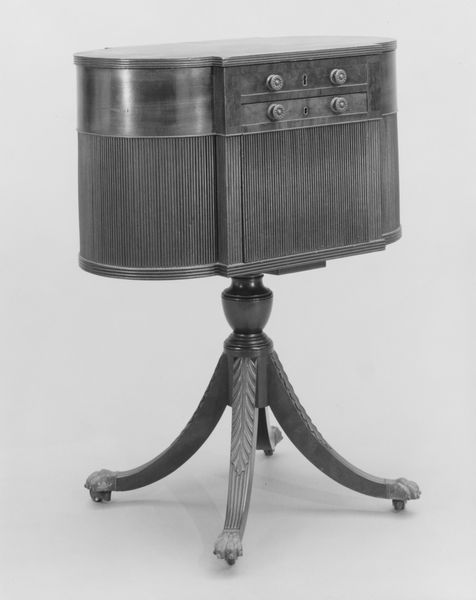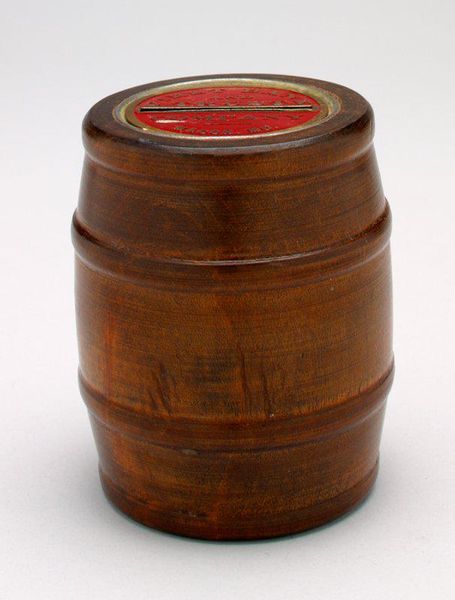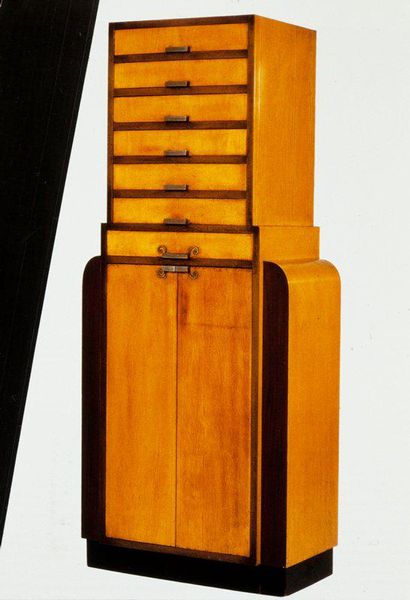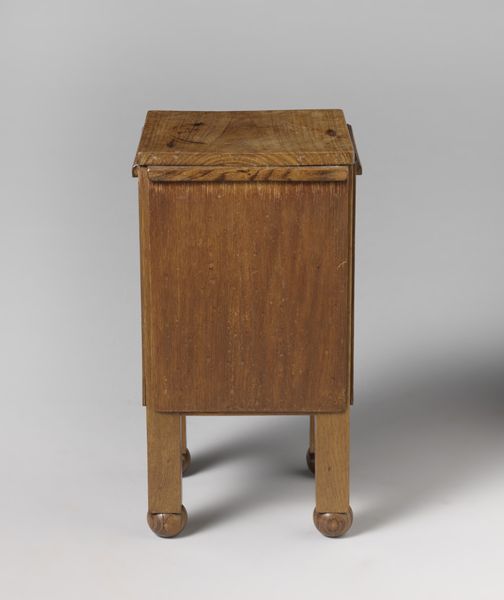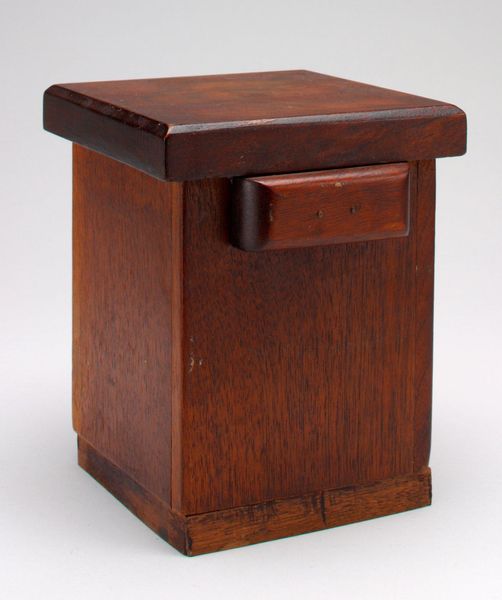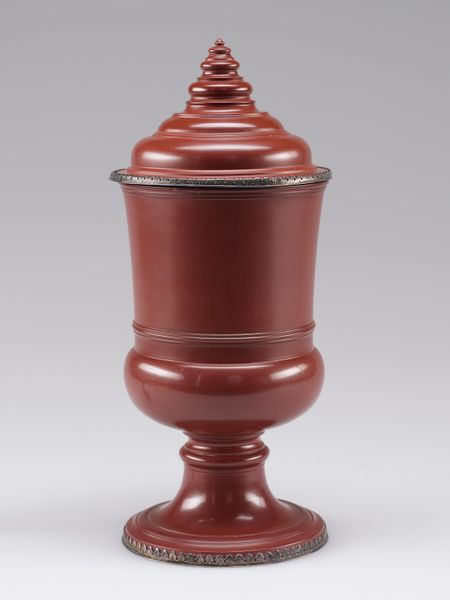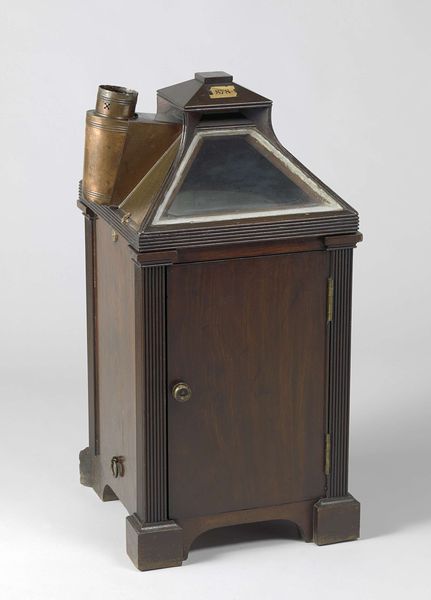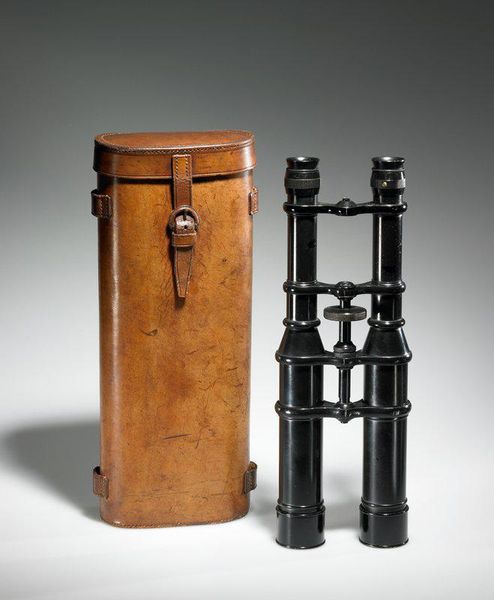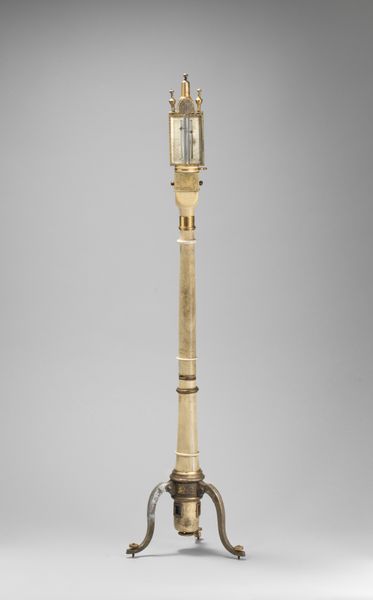
porcelain, bronze, sculpture, wood
#
portrait
#
neoclacissism
#
furniture
#
porcelain
#
bronze
#
england
#
sculpture
#
wood
#
decorative-art
Dimensions: 198.1 × 32.4 × 18.6 cm (78 × 12 3/4 × 7 5/16in.)
Copyright: Public Domain
Curator: This exquisite object before us, made around 1790, is titled "Barometer." It’s currently held at the Art Institute of Chicago and is attributed to the Vulliamy Family workshop. Editor: My first impression is that it has a strong classical sensibility – the porcelain figure especially exudes that almost dreamlike neoclassical quality. Curator: Indeed. The piece blends various materials, including porcelain, bronze, and wood, reflecting the popular style of decorative arts in late 18th-century England. We see here Neoclassicism expressed through functional objects. Editor: I’m struck by the female figure atop the clock. She leans towards the dial with this quiet grace; what do you make of her posture and dress? Curator: She embodies an idealized form reminiscent of antique statues – a deliberate move toward aestheticizing the rise of industrial rationality. Barometers became not just scientific instruments but conversation pieces, signifiers of cultivated taste. Editor: Absolutely. I see her not just as an aesthetic element, but an allegory for "science" or "knowledge." Leaning towards time as if intimately studying it. Curator: And these items found in aristocratic homes served the specific function of not only measuring weather change, but also displaying the homeowners cultural interests in the Enlightenment’s pursuit of natural philosophy. These objects affirmed wealth and class status. Editor: Yes. The incorporation of such explicit symbolic imagery serves not just as an indicator of cultural memory. But as a prompt for intellectual stimulation through allegorical messaging. Curator: Considering the piece as a whole—from the graceful statue to the carefully chosen materials, "Barometer" reveals how design can subtly enforce class distinctions while popularizing scientific curiosity. Editor: I agree. Exploring it today through this lens certainly provides an appreciation that reaches beyond decorative craftsmanship.
Comments
No comments
Be the first to comment and join the conversation on the ultimate creative platform.
